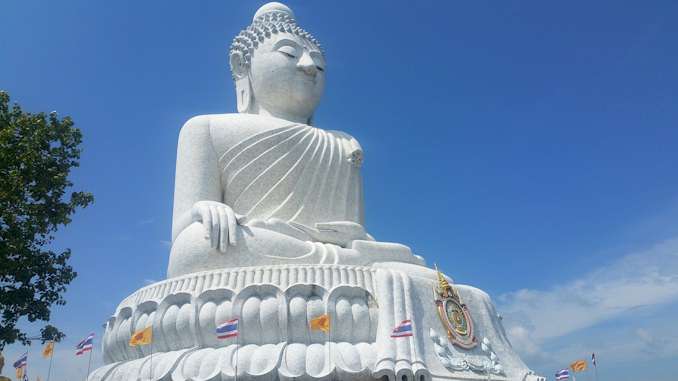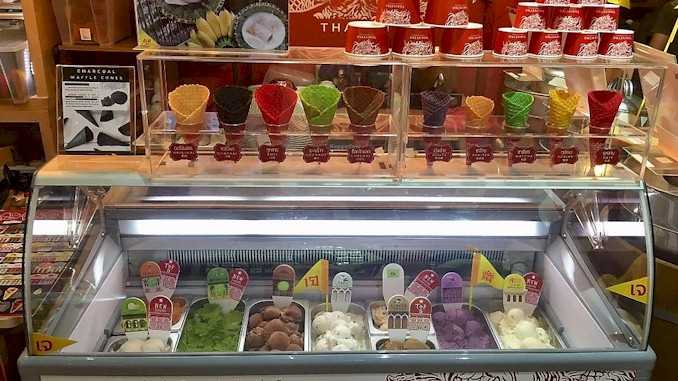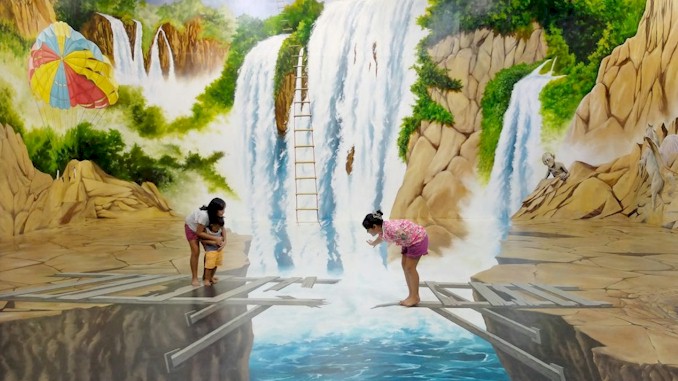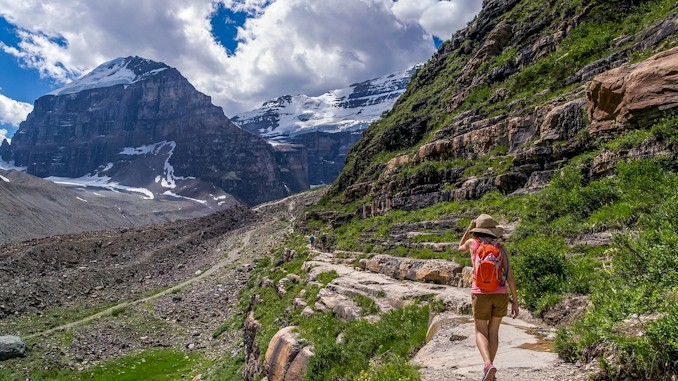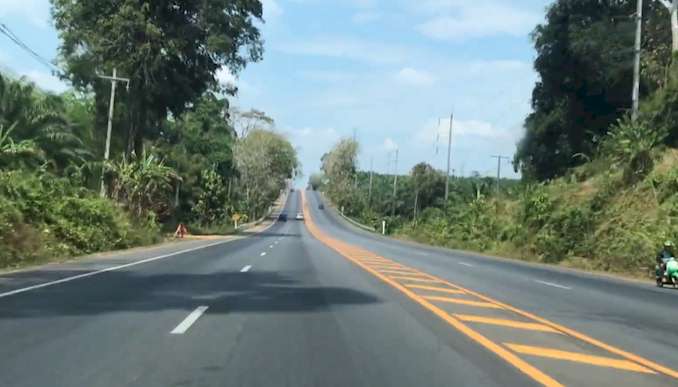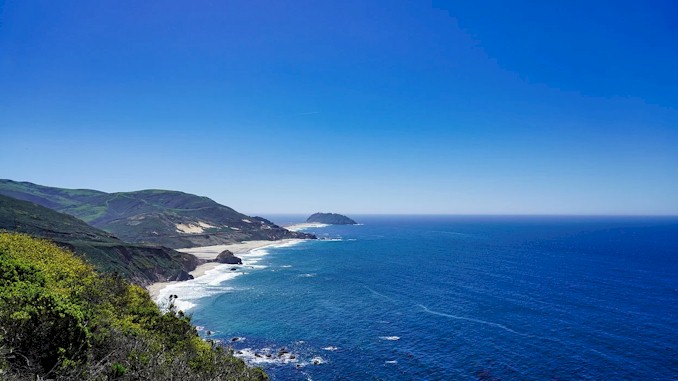Your Ultimate Guide to Visiting Big Buddha in Phuket
Have you ever wondered what it would be like to see a giant statue of Buddha sitting on top of a hill? I have, and that’s why I decided to visit Big Buddha in Phuket, Thailand. Big Buddha is one of the most famous landmarks in Phuket, and it’s easy to see why. It’s a huge white marble statue that is 45 meters tall and 25 meters wide. It’s kinda like seeing a skyscraper made of stone, but with a peaceful smile on its face. When I got there, I was amazed by the beauty and serenity of the place. I learned a lot about Buddhism and Thai culture, and I also enjoyed the stunning views of the island and the sea. In this blog post, I will share with you my ultimate guide to visiting Big Buddha in Phuket, and how you can make the most of your trip. Whether you are looking for a spiritual experience, a cultural adventure, or just a fun day out, Big Buddha has something for everyone.
How to get to Big Buddha in Phuket
Big Buddha is located on a hill called Nakkerd Hill in the south of Phuket, between Kata Bay and Chalong Bay. You can see the statue from many places on the island, but to get a closer look, you need to go up the hill. There are different ways to get to Big Buddha, depending on your preference, budget, and fitness level. Here are some of the options:
- By car or motorbike: This is the most convenient and comfortable way to get to Big Buddha, especially if you want to avoid the heat and the crowds. You can rent a car or a motorbike from many places in Phuket, or hire a taxi or a tuk-tuk to take you there. The road to Big Buddha is well-paved and signposted, but it is also steep and winding, so be careful and drive slowly. It takes about 20 minutes to drive from Kata Beach or Chalong Circle to Big Buddha. There is a spacious and well-organized parking lot at the entrance, where you can park your vehicle for free.
- By bus: If you are on a tight budget or want to experience the local public transportation, you can take a bus to Big Buddha. There are two bus routes that go near Big Buddha: the blue bus from Phuket Town to Rawai Beach, and the yellow bus from Phuket Town to Nai Harn Beach. You can catch these buses from Ranong Road in Phuket Town, or from any stop along the way. The fare is 40 baht per person. You need to get off at the junction of Chao Fa Road East and Soi Yodsane, where you will see a sign for Big Buddha. From there, you can either walk up the hill (about 2.5 km) or take a motorbike taxi (about 100 baht) to Big Buddha.
- By foot: If you are feeling adventurous and fit, you can hike up to Big Buddha from Kata Beach. This is a challenging but rewarding option, as you will get to enjoy the natural scenery and the views along the way. The hike takes about 2 hours one way, depending on your pace and fitness level. You need to follow Patak Road in Kata until you reach a junction with a sign for Big Buddha. Then, you need to follow a steep road up the hill until you reach a dirt trail that leads to Big Buddha. The trail is marked with red arrows and yellow ribbons, but it is not very well-maintained, so be careful and wear proper shoes. You will also need to bring water, sunscreen, and insect repellent, as there are no shops or facilities on the trail.
No matter how you choose to get to Big Buddha, you will be rewarded with an amazing sight of the statue and the surrounding views. Just remember to dress appropriately for visiting a temple (cover your knees and shoulders) and respect the local culture and religion.
What to expect when you visit Big Buddha
Visiting Big Buddha is not only a sightseeing trip, but also a spiritual and cultural experience. You will be amazed by the size and beauty of the statue, as well as the peaceful atmosphere and the stunning views of the surroundings. However, there are also some things you need to know and prepare before you go, so you can have a smooth and enjoyable visit. Here are some of the things you can expect when you visit Big Buddha:
- Admission fee and opening hours: The good news is that visiting Big Buddha is free, so you don’t have to worry about paying anything to see the statue. However, donations are always welcome and appreciated, as they help to maintain the site and support the monks. You can also buy some souvenirs or snacks from the shops nearby. The opening hours are from 8 am to 6 pm, so make sure you plan your visit accordingly.
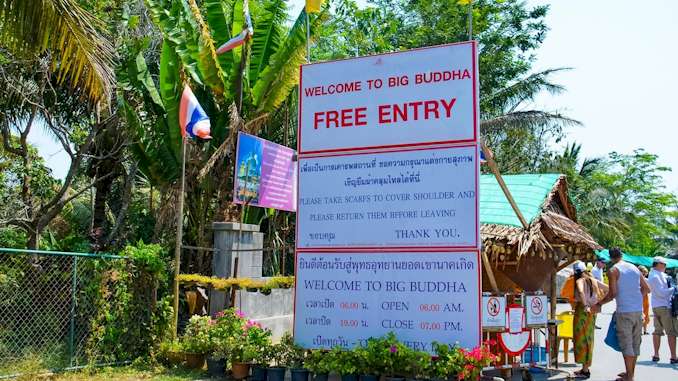
- Dress code and etiquette: As Big Buddha is a religious site, you need to respect the local culture and religion by dressing appropriately. This means covering your knees and shoulders, and avoiding any revealing or offensive clothing. If you are not dressed properly, you will be stopped at the gate and given some shawls to cover up with2. However, it is better to wear modest clothes that you have chosen yourself, as they will look nicer in your pictures. You also need to remove your shoes before entering the temple area, and avoid touching or pointing at any statues or monks. You should also keep your voice low and refrain from smoking or drinking alcohol.
- Climbing the stairs: To get to the statue, you need to climb 260 steps that lead up from the base to the top of the hill. The stairs are flanked by two naga (serpent) statues that guard the entrance. The climb is not too difficult, but it can be tiring and hot, especially in the noon sun. You should bring some water, sunscreen, and a hat, and take breaks if needed. You can also enjoy the views of the island and the sea along the way. Once you reach the top, you will be rewarded with a close-up view of the statue and a small exhibition on the life of Buddha.
- Exploring the temple: Besides the statue, there are also other things to see and do at the temple complex. You can visit the Great Hall, where you can admire the fine craftsmanship and ornate decoration of the interior. You can also see some smaller statues of Buddha and other deities, as well as some relics and artifacts. You can also join in some rituals, such as lighting incense sticks, ringing bells, or spinning prayer wheels. You can also learn more about Buddhism and Thai culture from the information boards or from talking to the monks.
- Eating at the canteen: If you are hungry after visiting Big Buddha, you can eat at the monastery canteen, which serves some delicious vegetarian food. The canteen is located next to the parking lot, where you can buy a meal ticket from the counter. The ticket costs 50 baht per person, and it includes a buffet of rice, noodles, curry, soup, salad, fruit, and drinks. The food is simple but tasty, and it is a good way to experience the local cuisine.
- Enjoying the views: One of the best things about visiting Big Buddha is enjoying the views of the surroundings. From the hilltop, you can see a panoramic view of Phuket island, with its green hills, blue sea, and white beaches. You can also see some nearby attractions, such as Wat Chalong (a famous temple), Phuket Town (the capital city), and Phuket Airport (where you can watch planes landing and taking off). The views are especially beautiful at sunset, when the sky turns into a colorful spectacle. You can take some amazing pictures or just relax and soak in the scenery.
Visiting Big Buddha is a memorable experience that you should not miss when you are in Phuket. It is not only a tourist attraction, but also a place of worship and culture. By knowing what to expect and how to prepare for your visit, you can make sure that you have a wonderful time at Big Buddha.
The history and significance of Big Buddha
Big Buddha is not only a spectacular sight, but also a symbol of the history and culture of Phuket and Thailand. The statue has a fascinating story behind its construction and meaning, and it reflects the values and beliefs of the people who built it and visit it. Here are some of the facts and insights about the history and significance of Big Buddha:
- The origin and inspiration of Big Buddha: Big Buddha was inspired by the vision of Phra Kru Wira Thammarangsi, the abbot of Wat Kittisangkharam in Phuket. He wanted to create a large statue of Buddha that would serve as a landmark and a spiritual center for Phuket. He also wanted to honor the 80th birthday of King Bhumibol Adulyadej, the beloved monarch of Thailand1. He consulted with some local businessmen and philanthropists, who agreed to support his project. They formed a foundation called Mingmongkol Faith 45 to raise funds and oversee the construction of Big Buddha.
- The construction and design of Big Buddha: Big Buddha was constructed beginning in 1990, and was finished on 29 December 1993, which the Chinese reckon as the day of the Buddha’s enlightenment. The statue is made of reinforced concrete, covered with white Burmese marble that shines in the sun. The statue is 45 meters tall and 25 meters wide, making it one of the largest Buddha statues in the world. The statue depicts Buddha in the Mara Vichaya Mudra pose, which means he is overcoming temptation and evil. The statue faces northeast, towards Phang Nga Bay.
- The meaning and purpose of Big Buddha: Big Buddha is more than just a statue; it is also a temple and a place of worship. The statue represents the Buddha Amitabha, or the Buddha of Infinite Light, who is revered in Mahayana Buddhism as the embodiment of compassion and wisdom. The statue also symbolizes peace, harmony, and prosperity for Phuket and Thailand. The statue is surrounded by smaller statues of Buddha and other deities, as well as bells, flags, lotus flowers, and other symbols of Buddhism. Visitors can pay respect to the statue by offering flowers, incense, candles, or money. They can also write their names or wishes on gold leaves or bricks that are used to decorate the statue or the temple.
- The impact and influence of Big Buddha: Big Buddha has become one of the most popular attractions in Phuket, attracting millions of visitors every year from different countries and religions. The statue has also become a source of pride and inspiration for the local people, who see it as a reminder of their faith and culture. The statue has also contributed to the development and conservation of the area around it, which was once a barren hill. Now, the hill is covered with lush greenery and wildlife, thanks to the efforts of the foundation and the monks who live there. The statue has also inspired other projects and initiatives that aim to promote Buddhism and social welfare in Phuket and beyond.
Big Buddha is a remarkable achievement that reflects the history and culture of Phuket and Thailand. It is a testament to the vision and dedication of its founder and supporters, as well as to the teachings and values of Buddhism. It is a place where visitors can experience awe, wonder, and tranquility. It is a place where they can learn more about themselves and their world.
The best time and season to visit Big Buddha
Big Buddha is a magnificent attraction that you can visit all year round, but there are some factors that you may want to consider before planning your trip. Depending on the weather, the crowds, and the events, you may have a different experience at Big Buddha. Here are some tips and suggestions on when and how to visit Big Buddha:
- Weather: Phuket has a tropical climate, which means it is hot and humid most of the time. The average temperature is around 28°C, but it can go up to 35°C or more in the summer months (March to May). The rainy season lasts from June to October, when there are frequent showers and thunderstorms. The best time to visit Phuket in terms of weather is from November to March, when it is dry and sunny. However, this is also the peak season for tourism, so expect more crowds and higher prices. If you visit Big Buddha during the rainy season, you may encounter some difficulties, such as slippery roads, poor visibility, and strong winds. You may also miss out on some of the views and activities around Big Buddha. Therefore, it is advisable to check the weather forecast before you go, and bring an umbrella or a raincoat just in case.
- Crowds: Big Buddha is one of the most popular attractions in Phuket, attracting millions of visitors every year from different countries and religions. The statue is open from 8 am to 6 pm, but it can get very busy during certain times of the day or the year. If you want to avoid the crowds, you should visit Big Buddha either early in the morning or late in the afternoon. This way, you can also enjoy the sunrise or the sunset from the hilltop. You should also avoid visiting Big Buddha on weekends or public holidays, when many locals will come to pay their respects. One of the busiest days to visit Big Buddha is on Buddha’s birthday, which falls on different dates each year according to the lunar calendar. On this day, there are many ceremonies and festivities at the temple, which can be interesting to watch, but also very crowded.
- Events: Besides the regular visits, there are also some special events that take place at Big Buddha throughout the year. These events can add more fun and excitement to your visit, but they can also affect your access and experience at Big Buddha. Some of the events that you may want to check out are:
- The construction of Big Buddha: Although Big Buddha was completed in 1993, there are still some ongoing works and improvements at the site. For example, there are plans to build a museum and a library under the statue. You can witness some of the construction activities when you visit Big Buddha, and you can also participate by donating money or materials. You can also write your name or wishes on gold leaves or bricks that are used to decorate the statue or the temple.
- The blessing of Big Buddha: Every year, on February 22nd, there is a special ceremony to bless Big Buddha and celebrate its anniversary. On this day, thousands of monks and devotees gather at the site to chant prayers and offer flowers, incense, candles, and food to the statue. You can join this event if you want to experience a unique spiritual atmosphere and witness a grand spectacle.
- The meditation retreats: If you want to learn more about Buddhism and practice meditation, you can join one of the meditation retreats that are held at Big Buddha periodically. These retreats are led by experienced monks who will teach you the basics of meditation and guide you through various exercises. You will also have a chance to stay at the temple overnight and enjoy the tranquility and serenity of Big Buddha. You can find more information about these retreats on their website.
Big Buddha is a wonderful attraction that you can visit anytime of the year, but knowing when and how to visit can make your trip more enjoyable and memorable. By choosing the right time and season to visit Big Buddha, you can avoid some of the hassles and inconveniences that may occur. By checking out some of the events that take place at Big Buddha, you can add more fun and excitement to your visit. Whatever you decide, make sure you respect the local culture and religion when you visit Big Buddha.
Tips and tricks for a smooth and enjoyable visit
Visiting Big Buddha is a rewarding and enriching experience, but it can also be challenging and stressful if you are not prepared. To make sure that you have a smooth and enjoyable visit, here are some tips and tricks that you can follow:
- Bring enough water and snacks: Visiting Big Buddha can take several hours, depending on how much time you want to spend there. The weather can also be very hot and humid, especially in the summer months. Therefore, it is important to stay hydrated and energized by bringing enough water and snacks with you. You can also buy some drinks and food from the shops near the parking lot, but they may be more expensive or limited in variety.
- Wear comfortable shoes and clothes: Visiting Big Buddha involves climbing a lot of stairs, walking on uneven paths, and standing in the sun. Therefore, it is advisable to wear comfortable shoes and clothes that can protect you from the heat and the dust. You should also avoid wearing flip-flops, sandals, or heels, as they may cause injuries or discomfort. You should also bring a hat, sunglasses, and sunscreen to protect yourself from the sun’s rays.
- Respect the dress code and etiquette: As Big Buddha is a religious site, you need to respect the local culture and religion by dressing appropriately. This means covering your knees and shoulders, and avoiding any revealing or offensive clothing. If you are not dressed properly, you will be stopped at the gate and given some shawls to cover up with. However, it is better to wear modest clothes that you have chosen yourself, as they will look nicer in your pictures. You also need to remove your shoes before entering the temple area, and avoid touching or pointing at any statues or monks. You should also keep your voice low and refrain from smoking or drinking alcohol.
- Take advantage of the free guides: If you want to learn more about Big Buddha and its history, you can take advantage of the free guides that are available at the site. These guides are volunteers who speak different languages and are happy to share their knowledge and stories with you. You can find them near the entrance or at the information booth. You can also tip them if you appreciate their service.
- Be aware of the monkeys: One of the fun aspects of visiting Big Buddha is seeing the monkeys that live on the hill. These monkeys are wild and curious, and they may approach you or try to grab your belongings. They are usually harmless, but they can also be aggressive or unpredictable if they feel threatened or provoked. Therefore, it is best to keep a safe distance from them and avoid feeding or touching them. You should also secure your bags, cameras, phones, glasses, hats, or any other items that may attract their attention.
- Enjoy the views: One of the best things about visiting Big Buddha is enjoying the views of the surroundings. From the hilltop, you can see a panoramic view of Phuket island, with its green hills, blue sea, and white beaches. You can also see some nearby attractions, such as Wat Chalong (a famous temple), Phuket Town (the capital city), and Phuket Airport (where you can watch planes landing and taking off). The views are especially beautiful at sunset, when the sky turns into a colorful spectacle. You can take some amazing pictures or just relax and soak in the scenery.
Visiting Big Buddha is a memorable experience that you should not miss when you are in Phuket. It is not only a tourist attraction, but also a place of worship and culture. By following these tips and tricks, you can make sure that you have a smooth and enjoyable visit at Big Buddha.
Other attractions near Big Buddha that you can explore
Big Buddha is not the only attraction that you can enjoy in Phuket. There are many other places that you can visit near Big Buddha, depending on your interests and preferences. Whether you are looking for more culture, nature, adventure, or relaxation, you will find something that suits you. Here are some of the other attractions near Big Buddha that you can explore:
- Wat Chalong: Wat Chalong is the most famous and sacred temple in Phuket, and it is only 2.1 km away from Big Buddha. The temple is dedicated to two revered monks who helped the people of Phuket during a rebellion in the 19th century. The temple complex consists of several buildings, statues, and pagodas, decorated with colorful and intricate designs. You can admire the architecture and art of the temple, as well as learn more about Buddhism and Thai culture. You can also see some relics of the Buddha, such as a bone fragment, which are kept in a glass case on the top floor of the main pagoda. You should dress modestly and respectfully when visiting Wat Chalong, and follow the rules and etiquette of the temple.
- Phuket Botanic Garden: Phuket Botanic Garden is a beautiful and peaceful place where you can enjoy the nature and diversity of plants in Phuket. It is only 2.6 km away from Big Buddha. The garden covers an area of 12 acres, and it features more than 30 zones of different types of plants, such as orchids, cacti, palms, herbs, fruits, and flowers. You can walk around the garden and admire the variety and beauty of the plants, as well as learn more about their names and uses. You can also see some animals, such as fish, birds, and butterflies, that live in the garden. The garden also has a cafe where you can relax and enjoy some snacks and drinks.
- Tiger Kingdom: Tiger Kingdom is a place where you can get up close and personal with tigers of different sizes and ages. It is only 2.9 km away from Big Buddha. The tigers are raised by experienced trainers who take good care of them and ensure their safety and well-being. You can choose to interact with tigers of different categories, such as smallest, small, medium, or big. You can touch, hug, play, and take pictures with the tigers under the supervision of the trainers. You can also learn more about the tigers and their behavior from the trainers or from the information boards. You should follow the rules and instructions of the trainers when interacting with the tigers, and avoid wearing bright colors or noisy accessories.
- Kata Beach: Kata Beach is one of the most beautiful and popular beaches in Phuket, and it is only 5.4 km away from Big Buddha. The beach has a long stretch of white sand and clear blue water, surrounded by green hills and palm trees. The beach is ideal for swimming, sunbathing, surfing, snorkeling, or just relaxing on the sand. You can also find many facilities and services on the beach, such as restaurants, bars, shops, massage parlors, umbrellas, chairs, showers, toilets, lifeguards, etc. You can also enjoy some water sports or activities on the beach, such as jet skiing, parasailing, banana boat riding, etc. The beach is also famous for its sunset views, which are stunning and romantic.
- Phuket FantaSea: Phuket FantaSea is a cultural theme park that showcases the myths and legends of Thailand through spectacular shows and attractions. It is only 18.7 km away from Big Buddha. The park features a grand theater where you can watch a show called Fantasy of a Kingdom, which combines acrobatics, magic, music, dance, elephants, and special effects to tell a story of Thai culture and history. The park also has a buffet restaurant where you can enjoy a variety of dishes from Thai and international cuisines. The park also has a shopping village where you can buy some souvenirs or handicrafts from Thailand. The park also has some other attractions, such as a carnival village, a palace of elephants, a tiger jungle adventure, etc.

